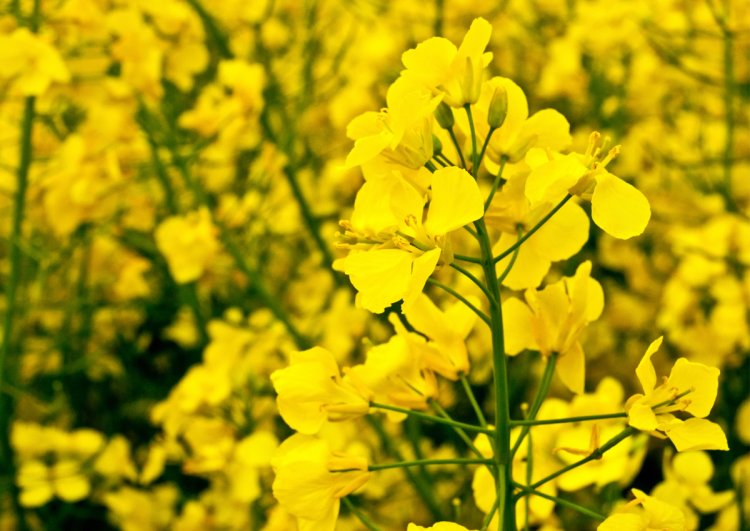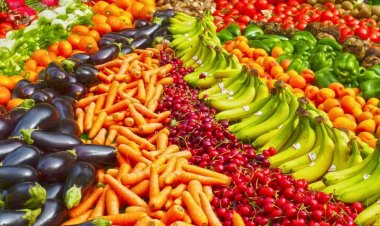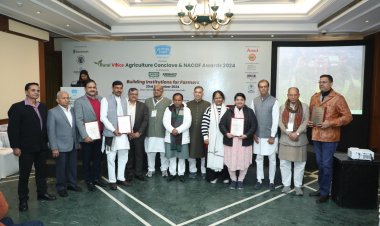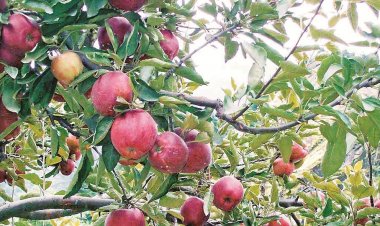Not one but many compelling evidences in favour of GM mustard
The Supreme Court of India made a very pertinent observation seeking compelling reasons for the release of GM mustard in its hearing held on 2 December 2022. In response, the scientific community has collated solid datasets and empirical evidence based on rigorous biosafety evaluation and closely supervised open field trials, and greenhouse/nethouse experiments on GM mustard in the last two decades. Rs 1,56,800 crore ($19.6bn) of edible-oil imports is one of the most compelling reasons to release GM mustard.

The Supreme Court of India made a very pertinent observation seeking compelling reasons for the release of genetically modified (GM) mustard in its hearing held on 2 December 2022. In response, the scientific community has collated solid datasets and empirical evidence based on rigorous biosafety evaluation and closely supervised open field trials, and greenhouse/nethouse experiments on GM mustard in the last two decades. The case relating to GM crops is one of the longest pending disputes before the apex court. The scientific community firmly believes that the following points and empirical datasets should be presented before the top court ahead of its judgement on GM mustard:
1. Double-digit inflation: Like soyabean, groundnut and other edible oils, the cost of a litre of mustard oil has doubled from Rs 90-100 per litre to Rs 180-200 per liter in the last ten years. The rise in edible oil prices has been a big concern for consumers. The surge in edible oil prices, in India and globally, as measured by the FAO sub-index for vegetable oil has risen sharper than the general food prices index in the last few years. In India, the CPI for edible oil, measured in terms of oils and fats in the Food and Beverages category of CPI peaked at an all-time high of 202.4 in May 2022 from a record low of 81.9 in Jan 2011 with a base benchmark of CPI 100 in 2012. The inflation in edible oils almost doubled in the last few years causing great suffering to the poorest of poor in society.
2. Import dependency in edible oils: In 2021-22, India imported an estimated 14.1 million tonnes (mt) of edible oils. In the past, edible oil imports peaked at 1.97 mt, which forced the then Government of India to launch the National Mission on Oilseeds in 1987-88. The situation improved momentarily in the Nineties. By early 2000-01, India registered an unprecedented surge in the import of edible oils to the tune of 4.1 mt, which rose to 6.7 mt by 2010-11 and 15.6 mt by 2015-16. Notably, the magnitude of imports remained stagnant at 14-15 mt per year, which is equivalent to two-thirds of India's total edible oil consumption pegged at 21 mt in 2021-22.
3. Staggering cost of imported edible oils: India drained precious foreign resources of $19.6bn or Rs 1,56,800 crore in 2021-22 on imported edible oils consisting of palm, soybean, sunflower and canola oils. The cost of imported edible oils was equivalent to 50 per cent of India’s total agri-import of $32.4bn in 2021-22. In the past, India spent Rs 926 crore on imported edible oils in 1987-88, Rs 6,093 crore in 2000-01, Rs 29,860 crore in 2010-11, Rs 68,677 crore in 2015-16, Rs 71,625 crore in 2019-29 and Rs 1,17,225 crore in 2020-21 before reaching an all-time high at Rs 1,56,800 crore in 2021-22. An unprecedented surge in the international prices of edible oils coupled with a deteriorating exchange rate in the last two years has caused spiralling inflation in the domestic edible oil market.
4. Low edible oilseeds yield: The edible oil-seeds yield shows a negative CAGR over the last 25 years in India. In fact, the yield of all oilseed crops is abysmally low -- as low as one-third of the global averages and sometimes the lowest in the world. For the last two decades, the yield of oilseed crops in India remained stagnant at around 1,100-1,200 kg per hectare. India produces a total of 35.9 mt of oilseeds, barely yielding 1,247 kg per hectare from the total oilseed crop area of 28.8mn hectares (ha) in 2020-21. Edible oil recovery at 8 mt from 35.9 mt of total oilseeds hardly meets even 35-40 per cent of the total edible oil requirement pegged at 21 mt per annum (mtpa). The situation will worsen in the future as the demand for cooking oil has been increasing year-on-year, with projected demand at 29.05 mt by 2029-30.
5. Global edible oil competitiveness: Globally, the approval and adoption of GM canola, an equivalent of mustard and GM soybean, has not only saved economies from crop losses caused due to pests, diseases and weeds but also increased the competitiveness of farmers to produce edible oils at a much more competitive price than the Indian farmers. Globally, GM crops, particularly edible oilseed crops such as soybean and canola have been grown since 1996 in the major edible oil-producing countries of Argentina, Brazil, the US and Canada. A sneak peek into the global adoption of GM edible oilseeds shows a robust adoption and acceptance of GM crops over 190.4mn ha by 17mn farmers in 29 countries.
6. Basket of edible oils (GM and non-GM): Like other big economies, India is one of the largest consumers of edible oil derived from GM oilseeds both produced domestically and imported from different GM-growing countries. Of the 14.1 mt of imported edible oils, GM soybean and GM canola constituted around 4.1 to 4.6 mt, equivalent to 30 per cent of the total imported edible oil. In addition, cotton oilseed is a major source of domestically produced cotton oil, contributing close to 1-1.5 mt to the edible oil pool in India. The majority of cottonseed oil is derived from GM Bt cotton seeds cultivated over 11.9mn ha or 95 per cent of total cotton-growing areas in Northern, Central and Southern cotton-growing zones. In summary, India annually consumes around 5-6 mt of edible oil in the form of soybean, canola and cotton sourced from GM plants without any adverse health effects. In addition, GM cotton oilseed cake or kapas khali constitutes almost one-third of the total animal feed. It is a major constituent of animal feed available at an affordable cost.
7. Level up on production technology: India’s farmers are at a great disadvantage and have been denied access to technologies, and thus they are unable to compete in the global trade in oilseed grains, edible oils and oilseed cake. Our farmers need to level up on production technologies as they struggle to cope up with pests, diseases and vagaries of climate change that are more severe in tropical agro-climatic regions such as India. Increasing the production of oilseeds is an absolute necessity to increase the flow of edible oil. In the past, India has made some progress on crop improvement with the best of breeding efforts coupled with All India Coordinated Research Projects on mustard, soybean and other major oilseeds crops. However, the self-pollinated nature of oilseeds makes it extremely difficult to harness the genetic potential of diverse germplasm. On the contrary, the competing edible oil-producing countries have deployed a series of advanced GM technologies to increase the yield of canola and soybean, which now dominate global trade in edible oil, oilseeds and animal feed.
8. GM mustard is a platform technology: It took a decade of rigorous scientific assessment and public scrutiny before GEAC approved the environmental release of hybrid DMH-11 and its parental line — a new genetic system of heterosis breeding for developing cost-effective, 100 per cent fertile and high-yielding mustard hybrids under the supervision of the Indian Council of Agricultural Research (ICAR). GM mustard hybrid DMH-11 is the first-generation mustard hybrid based on the Barnase-Barstar system developed by Dr Deepak Pental at a time when there was no CMS system available for producing mustard hybrid in early 2000. It is a proof-of-concept showing a comparative yield advantage over its parent Varuna variety. The deregulation of GM mustard Barnase-Barstar system technology is expected to give impetus to the mustard breeding programme by both the public and private sectors resulting in the introduction of high-yielding and superior mustard hybrids capable of revolutionizing mustard farming and edible-oil production in the country.
9. Ownership of GM Mustard: Contrary to GM mustard being attributed to a foreign source, it is 100 per cent an indigenous technology where a dozen of patents on the Barnase-Barstar system were filed and obtained on Indian mustard (Brassica juncea). NDDB and Delhi University held around 10 patents on modified Barnase-Barstar pollination control systems and seed production methods on Indian mustard obtained between 2004 and 2015. These patents were filed and granted in multiple mustard/canola-growing geographies of Australia, Canada, the EU and the US. NDDB and the Department of Biotechnology (DBT) funded the entire R&D and rigorous biosafety assessment costing Rs 90 crores to the mustard (Brassica) group of the Centre for Genetic Manipulation of Crop Plants (CGMCP) of University of Delhi. This resulted in 10 patents, a dozen of PhDs and a large number of greenhouse/nethouse studies and government-supervised large-scale field trials before GM mustard was finally approved for environmental release on 18 October 2022 by the Genetic Engineering Appraisal Committee (GEAC) of the Ministry of Environment, Forests and Climate Change (MOEF&CC).
(Dr CD Mayee is President of South Asia Biotechnology Centre, Jodhpur, Rajasthan.)
(Bhagirath Choudhary is Founder & Director of South Asia Biotechnology Centre, Jodhpur, Rajasthan.)




 Join the RuralVoice whatsapp group
Join the RuralVoice whatsapp group









































